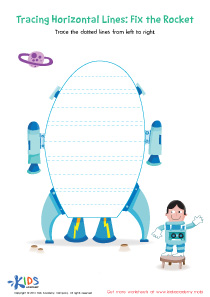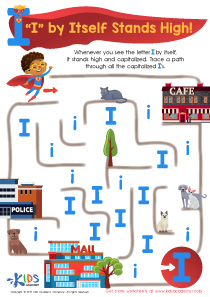Normal Missing Letters Worksheets for Ages 4-8
5 filtered results
-
From - To
Our "Missing Letters Worksheets for Ages 4-8" are designed to boost your child's alphabet skills through fun and engaging activities. These printable worksheets help young learners practice identifying and filling in missing letters, enhancing their understanding of alphabet sequence and letter recognition. Each colorful sheet offers age-appropriate exercises tailored to children's evolving learning stages, promoting literacy development in an enjoyable way. Perfect for preschool to early grade kids, our worksheets turn learning into an adventure, reinforcing key concepts while encouraging independent practice. Build a strong foundation in reading and writing with our expertly crafted resources.
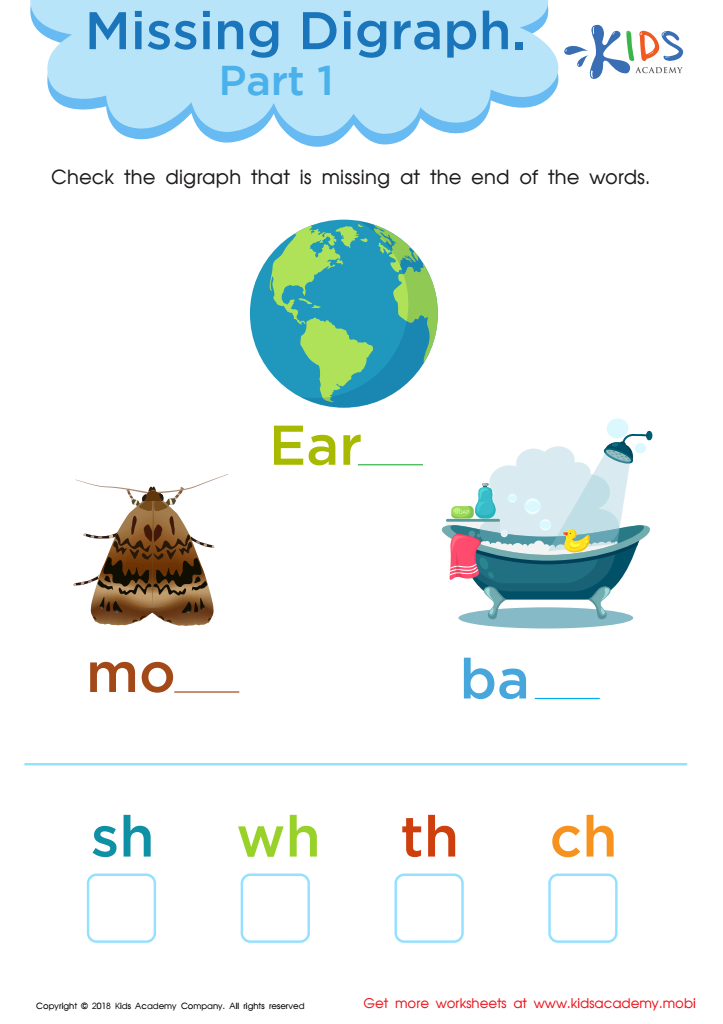

Missing Digraph: Part 1 Worksheet
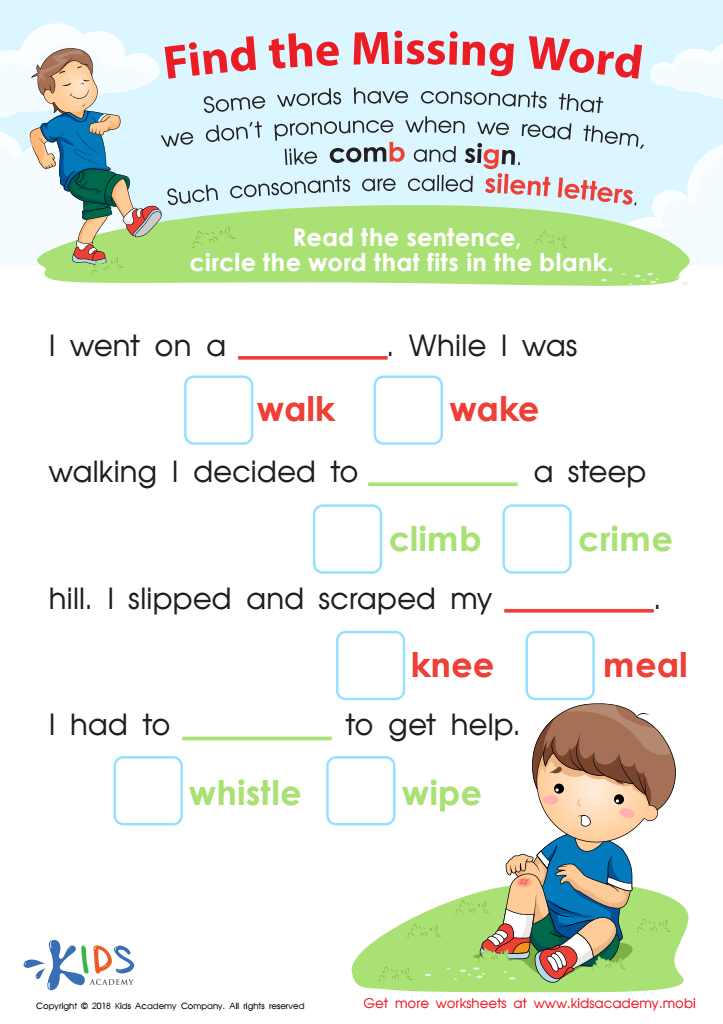

Find The Missing Word Worksheet
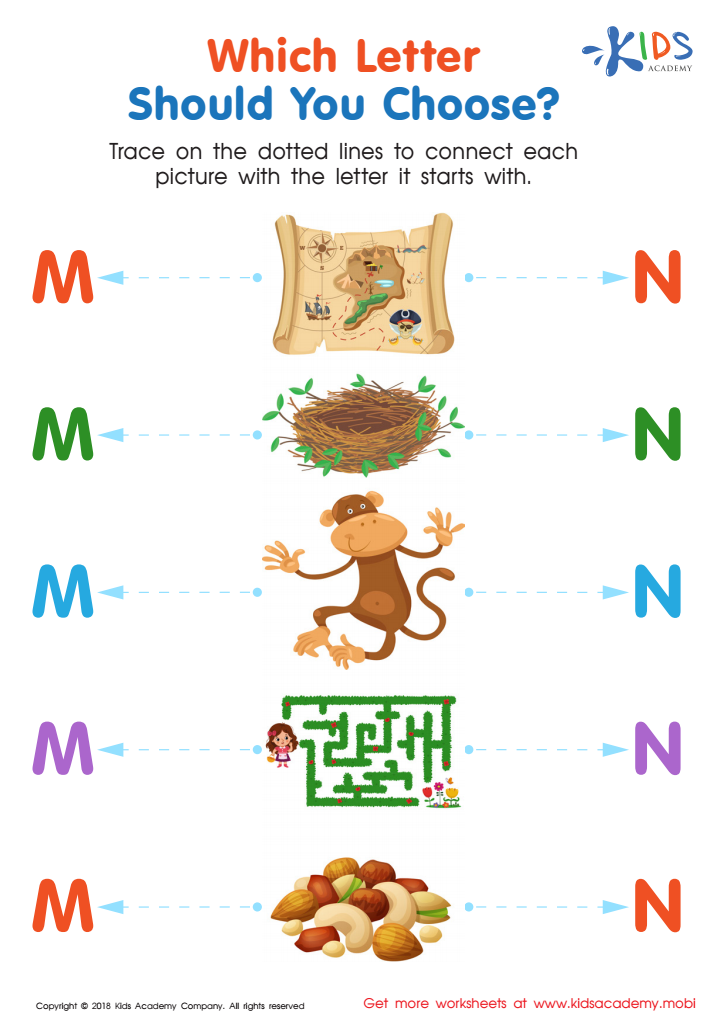

Which Letter Should you Choose? Worksheet
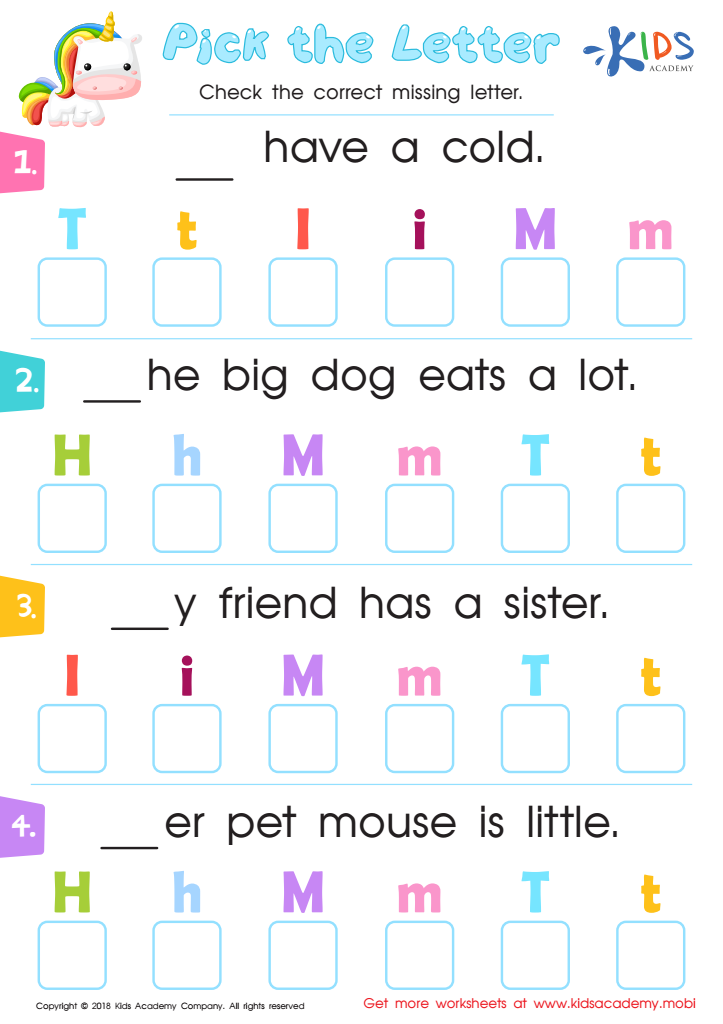

Pick the Letter Worksheet
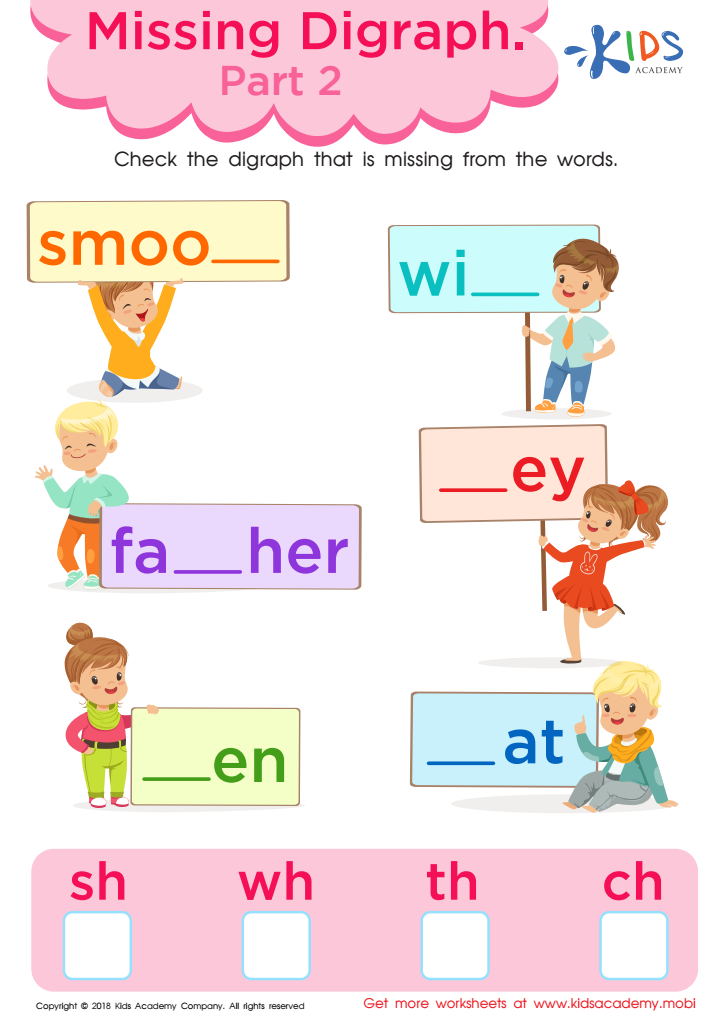

Missing Digraph: Part 2 Worksheet
Parents and teachers should care about Normal Missing Letters activities for children aged 4-8 because these exercises play a crucial role in literacy development during early childhood. At this age, children are in a critical period for language acquisition and cognitive growth. Engaging in missing letters activities can significantly enhance their letter recognition, a foundational skill necessary for reading. This skill helps children to understand the alphabetic principle, where they learn the relationship between letters and sounds, which is essential for decoding words and fluent reading.
Additionally, these activities foster important cognitive skills such as critical thinking, problem-solving, and memory retention. By identifying and filling in missing letters, children practice paying attention to detail and using contextual clues, which are valuable skills beyond reading. Moreover, they gain a sense of accomplishment and confidence each time they correctly complete these tasks, thus building a positive attitude toward learning.
Consistent practice with normal missing letters activities also supports spelling and vocabulary development. They expose children regularly to word construction, instilling familiarity with word patterns and phonetic structures. This early engagement sets a robust foundation for more complex language skills in later years, aiding overall academic success. Therefore, incorporating such activities supports a holistic approach to early literacy and cognitive development.
 Assign to My Students
Assign to My Students





